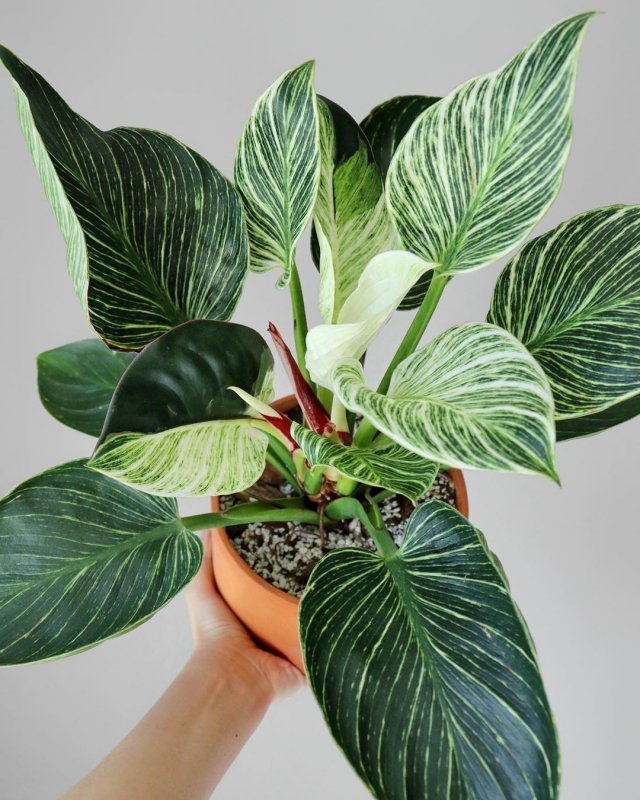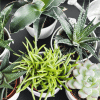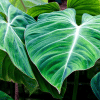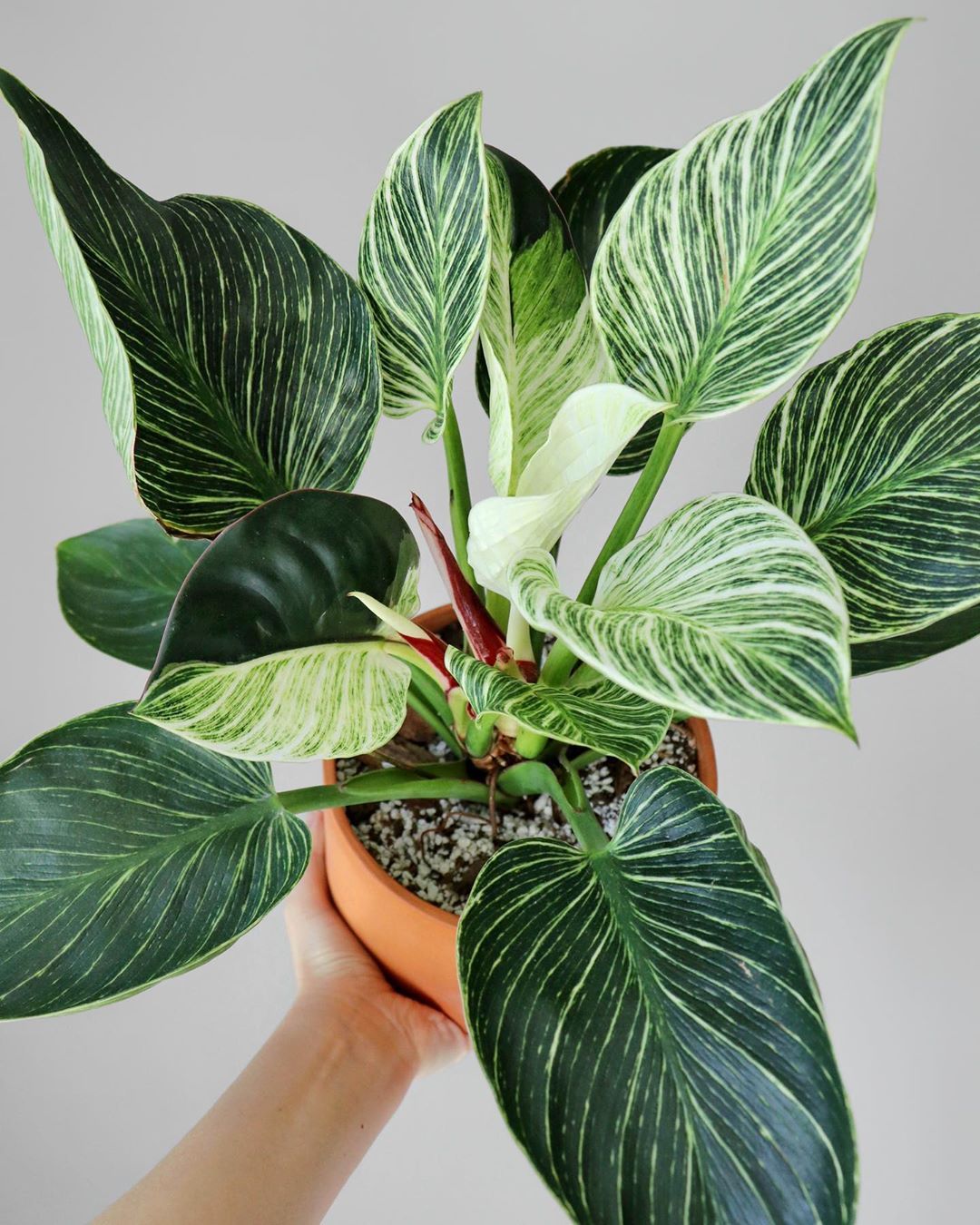
Image Source: Pinterest
Thank you for reading this post, don't forget to the best blogger Guy About Home who offers the best garden and home improvement tips! If you are a home decor and design fan, don't miss the tips on home ideas. If you are a home garden owner, then you might be interest in our complete guides to house plants!
Philodendron Birkin Benefits
The Philodendron Birkin plants contribute to the beauty of your interiors. Its white stripes on its dark green leaves and overall shape give it a striking and gorgeous look.
There’re multiple species of Philodendron, famous for their easy-going nature and green foliage. They’re known to improve the quality of air in your home. Some better absorb carbon dioxide and other toxic substances from the air. Others trap dust and remove it from circulation in the air.
Having a Philodendron Birkin in your home is incredible, and the best way to enjoy this plant is always to keep them fresh and glossy. Aside from bright light, you need other things to care for your plants. Water, soil, temperature, humidity, etc., are all required. That’s why you’re here, as we will give you further tips on how to care for your Philodendron Birkin plants.
No worries! Though you might encounter the difficulties when learning how to care such an plant as a new plant caring starter, we got the most popular plant lover quotes that can partner with you and you are going to succeed in plant care and grow.
Philodendron Birkin: Quick Facts
- Botanical name: Philodendron Birkin
- Common name: White Wave
- Plant type: Philodendron Rojo Congo
- Origin: A cultivar of Philodendron Rojo Congo
- History: The Philodendron Birkin is a rare and new hybrid of Philodendron Rojo Congo that has become very popular among gardeners. Tracing its history, the plant is known to have originated as a mutation on a Philodendron ‘Rojo Congo,’ which was later separated and cultivated. It’s also suggested to be a hybrid of ‘Rojo Congo’ and ‘Green-Leaf Philodendron’ originating from Thailand.
Is a Birkin Philodendron Rare?
The Philodendron Birkin plant originally grew as a rare and spontaneous gene mutation. But today, it’s a designer plant that does not grow wild.
Once a rare plant, Philodendron Birkin has become a prevalent plant in many households today. Also, it’s commonly available in garden places and big box stores at prices ($20 to $50) cheaper than when it was rare.
Not confident in planting an indoor plant? Why not getting power from our inspiring indoor plants quotes?
Is Philodendron Birkin Toxic?
Toxicity to Humans
Although Philodendron Birkin plants are trendy in our homes, they contain toxic calcium oxalate crystals in humans and pets. It’s best to keep it out of the range of little children. However, the plant becomes toxic when a part is chewed on. So, it’s best to observe this on time and act faster.
Toxicity to Cats and Dogs
The Philodendron Birkin plants are toxic to cats and dogs, especially cats. If your cat or dog eats any part of the leaves, it can result in pain, spasms, seizures, and swelling. When noticed, reach out to your veterinary doctor immediately for advice.
How Fast Does Philodendron Birkin Grow?
Birkin is one of the most unique species of the Philodendron in the family of Araceae. The plant grows both vertically and horizontally. It grows faster during its growing season but slowly throughout the year.
The Birkin proliferates on all parts; roots, leaves, or stems at about 4-inches weekly. The plant grows fully when planted on the ground or in flowerpot soil. Once there’s sufficient water, food, and sunlight, the Philodendron Birkin specie’s growth could overwhelm the gardener.
How Big Does a Birkin Philodendron can Get (full size)
Birkin Philodendron full size is 3 feet (90cm). Although it is a fast-growing houseplant, you don’t have to worry about it going taller or broader than this. The plant also produces beautiful green leaves that won’t expand beyond three feet in width. So, it’s best to put it in a large area in your home that will encourage its maximum growth.
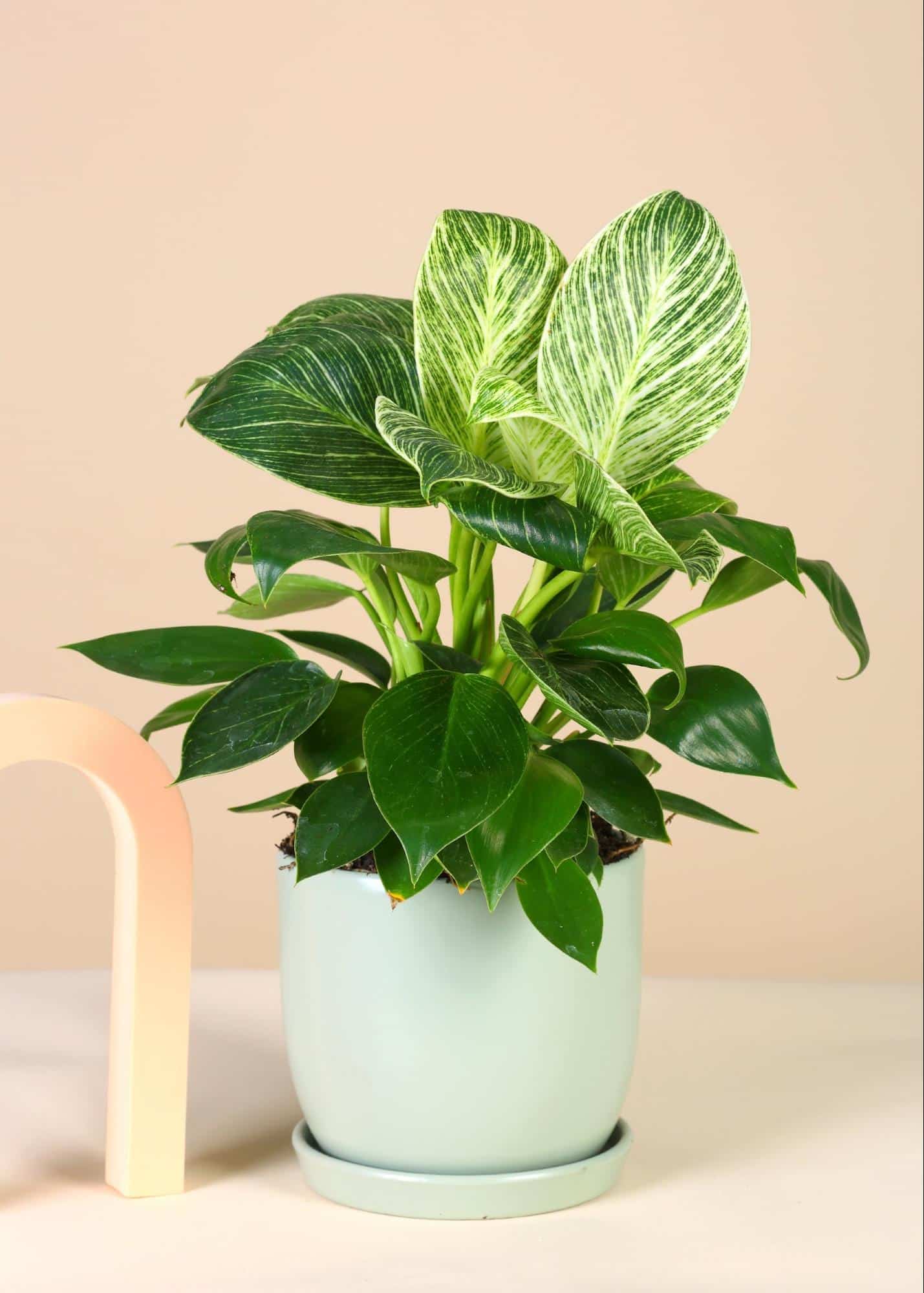
Image Source: Fleur and co.
Is Philodendron Birkin Variegated?
The Philodendron Birkin plant is a variegated species having unique solid green foliage, accompanied by exceptional white contrasting thin stripes. The young plants are also solid green, eventually developing white variegation when fully grown.
How to Care for Philodendron Gigas?
The Philodendron Gigas is another species of Philodendron that can be quickly grown indoors. It is a tropical plant that is easy to care for, requiring minimal attention from you. The basic requirements needed to care for the plant are;
- Soil – with a mixture of orchid bark, warm casting, sphagnum moss, etc.
- Water
- Light
- Temperature etc.
Philodendron Birkin Light Requirements
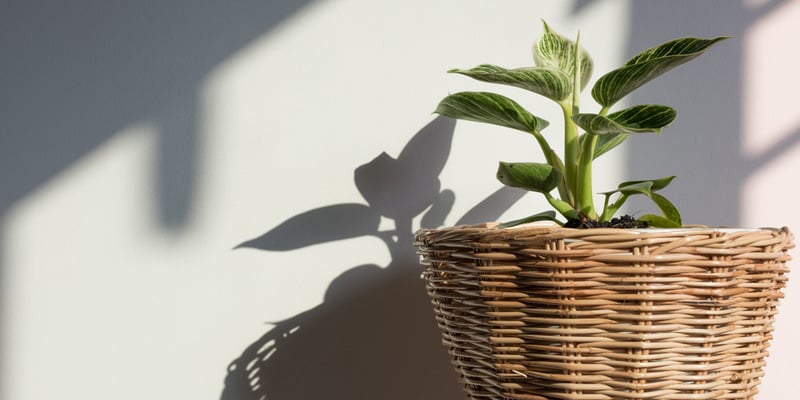
Image Source: lawn.com.au
Philodendron Birkin needs medium to bright indirect sunlight to grow, which is best for its optimal growth. Meaning it does not like low or direct sunlight. This makes the windowsills a perfect place to keep them.
No sunlight or low-light situation has two effects on the plant. Firstly, the plant tilts to a light source and starts growing. Secondly, the bright white lines on its leaves gradually fade into dark green. In the same vein, exposing it to direct sunlight gives the plant sunburn. That’s why indirect sunlight for 12 hours (maximum) is perfect for Birkin to grow well enough not to burn.
Philodendron Birkin Soil Requirements
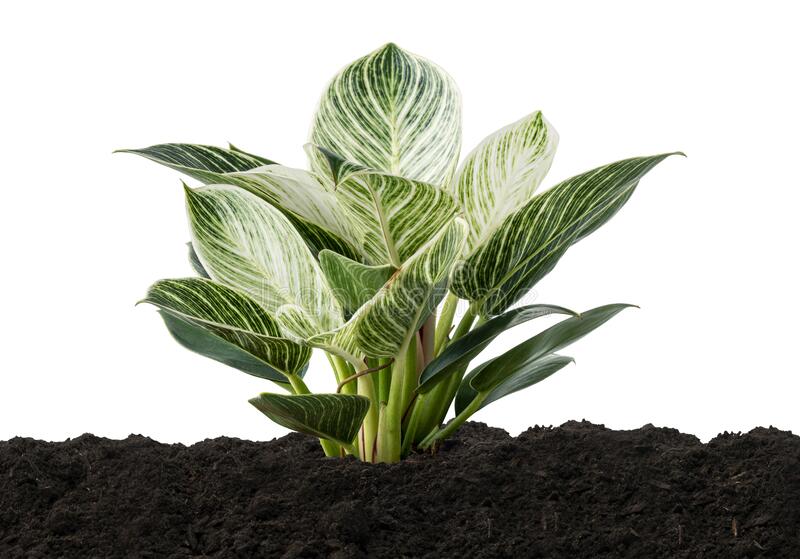
Image Source: Dreamstime.com
The Philodendron Birkin likes a loose well-draining soil type that can retain water for a few days before drying up. This also means that the soil for the Philodendron Birkin plant needs to be able to handle being watered regularly.
In addition to all these, the perfect soil for Philodendron Birkin is a potting mix with perlite. The peat moss and perlite prevent too much compacting and clumping of the soil, allowing it to drain water quickly. This process prevents the soil from sitting too long in the water, leading to root rot. Peat moss is also an ideal mix or mixes with organic matter to help the soil keep more moisture.
Philodendron Birkin Watering Requirements

Image Source: Google
Watering your Philodendron Birkin isn’t a tricky thing to do. The plant is always thirsty and loves to be drenched as soon as the soil is dry. For a watering schedule, a Birkin only needs water once every week and a bit more during winter to stay healthy.
Even though a Birkin needs to be kept moist, ensure the top inch of the soil feels dry before adding water. Insufficient water affects the plant’s root, preventing it from absorbing nutrients from the soil. So also, overwatering can cause the stem to be mushy and the root to rot.
Philodendron Birkin Fertilizer
Fertilizing your Philodendron Birkin helps it grow quickly and stay healthy. The plant needs a balanced, weak houseplant fertilizer solution to grow faster, improve variegation, and keep its foliage glossy.
Therefore, you should fertilize your Birkin at least once every month during the spring and summer seasons with water fertilizer or organic compost. Regular fertilization/feeding could cause root burn and yellowing of the leaves.
Philodendron Birkin Growth Conditions
Other conditions that accelerate the growth of your Philodendron Birkin plants are humidity and temperature.
Humidity and Temperature
The temperature of the room where your plant is placed needs to be higher than 55 degrees Fahrenheit. In most homes, the temperature ranges from 65 to 85 degrees Fahrenheit. And the humidity level should be between 50 and 60 percent.
If you stay in a dry climate and want to boost the humidity of the environment where your Birkin is placed, using a humidity tray or small humidifier will help. In other words, you can keep them in your bathroom with more humidity than in places in your house.
Philodendron Birkin Report Requirements
We’ve established that Philodendron Birkin is a fast-growing plant that will eventually need to be repotted. It is most likely to outgrow its pot within a planting season. It’s advised not to leave them in a pot for more than two years. The best time to repot is once every year or when it starts showing signs of rootbound.
In repotting your Philodendron Birkin, here’s the requirement;
- Pick a planter (2.5 – 5cm) that’s bigger than the plant’s current pot size. Too large a pot could cause excess moisture in the plant, leading to root rot.
- Add a new batch of aroid potting mix until the pot is one-third full.
- Gently pat the soil down.
- Water it and return it to its original position.
Philodendron Birkin Propagation
Stem Cutting
This is the first step in Philodendron Birkin propagation. These processes include;
- Get a knife or a sharp cutting tool to cut a piece of the stem. Ensure it’s clean to avoid passing on any infection.
- Choose a stem section, and cut it diagonally.
- Carefully remove any leaves found at the lower part of the stem cut to prevent it from sitting in the water.
Water
- Fill a container/glass with fresh water to place the stem cut. Ensure the water is neither too cold nor hot to prevent a burn or shock on the stem, leading to the death of the stem.
- Preferably use purified water with low levels of chlorine and fluorine.
- Place the stem cut node and allow it to sit in the water so it can start growing immediately.
- Keep the water fresh always to prevent stagnation and smells.
Air layering
Using the air layering method involves making an incision on the stem. This method includes;
- Using a knife, make an about 2.5cm long incision on the stem.
- Put a thin twig or toothpick on the incision to keep it clean.
- Place the stem incision in a plastic cup, pack some pet moss or sphagnum moss into it and keep it in place.
- Leave for 3-4 weeks until the plant starts growing.
Seed
The new plant is most likely to look completely different from the parent plant. Since Philodendron Birkin is a mutation, you can’t grow the plant from its seed. However, if you still choose to go ahead with planting the seeds. And place them on the ground or in damp cotton until they start to germinate.
Philodendron Birkin Mature & Growth
Do Philodendron Birkins Climb?
The Philodendron Birkin matures to a height of 3 feet. This means it does not climb, and it’s a self-supporting plant. It is believed to be a sport of Red Congo, a self-heading Philodendron.
Philodendron Birkin Climbing
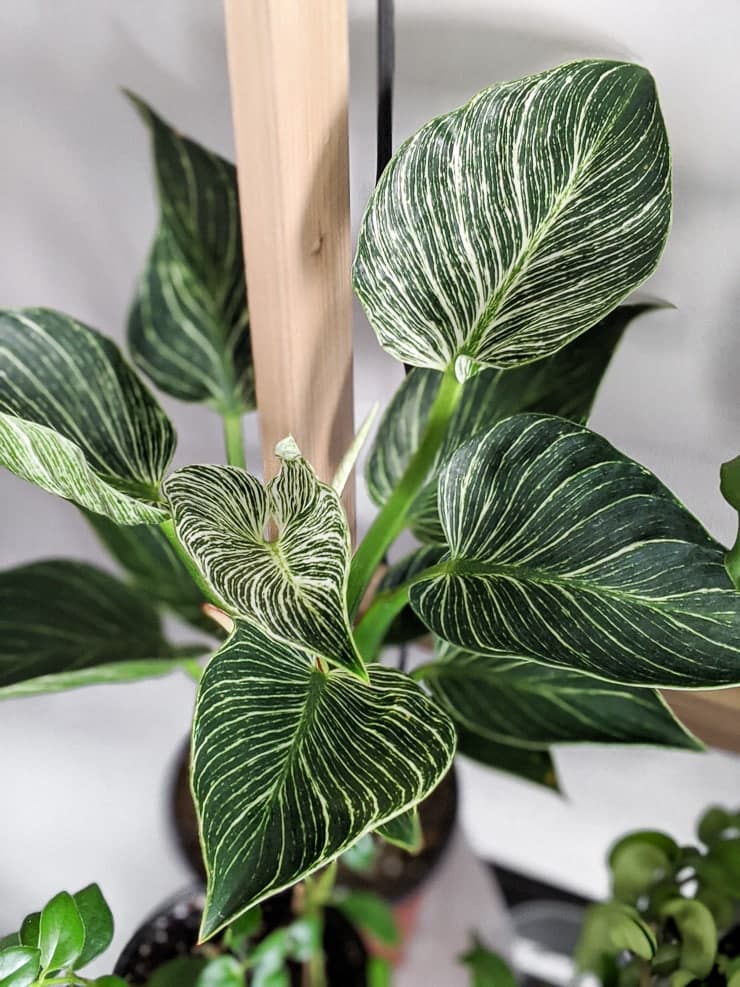
Image Source: Brittan Goldwyn
Generally, Birkins do not climb. Their growth is centralized. Meaning they grow from the center. The plant grows to a height of 50 to 100 centimeters tall. As they grow, they can become heavier and lean to one side. When this happens, you can stick a bamboo stake in the soil to prop it.
Philodendron Birkin Leaf Health Issues
Philodendron Birkin Yellow Leaves
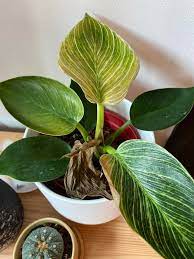
Image Source: Reddit
A yellow coloration on a Birkin leaf can indicate old age or overwater. If a dark green leaf at the bottom of the plant turns yellow, it is an old leaf. You need not worry as it is a natural lifecycle of the plant.
If the leaf isn’t old, overwatering can make it turn yellow. Ensure to drain the water in the holes and let the soil dry before watering again.
Philodendron Birkin Brown Leaves
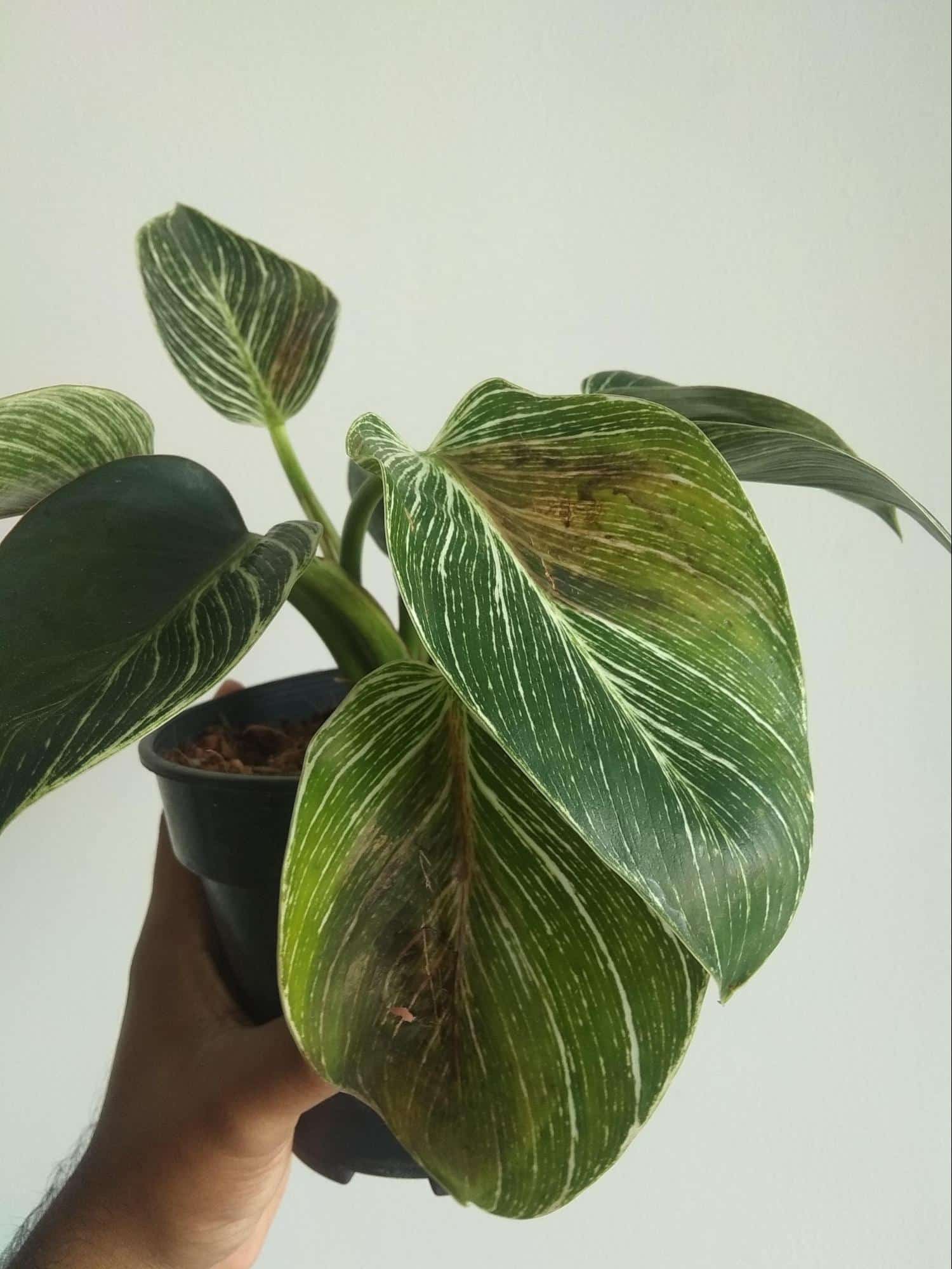
Image Source: Reddit
The Philodendron Birkin plant is tropical and loves humidity. So, if the leaves turn brown and crispy, it means it’s too dry, and you should place it in a humid place. You can either use a room humidifier or place the plant in a pebble tray filled with water to top up its humidity.
Philodendron Birkin Leaves Curling
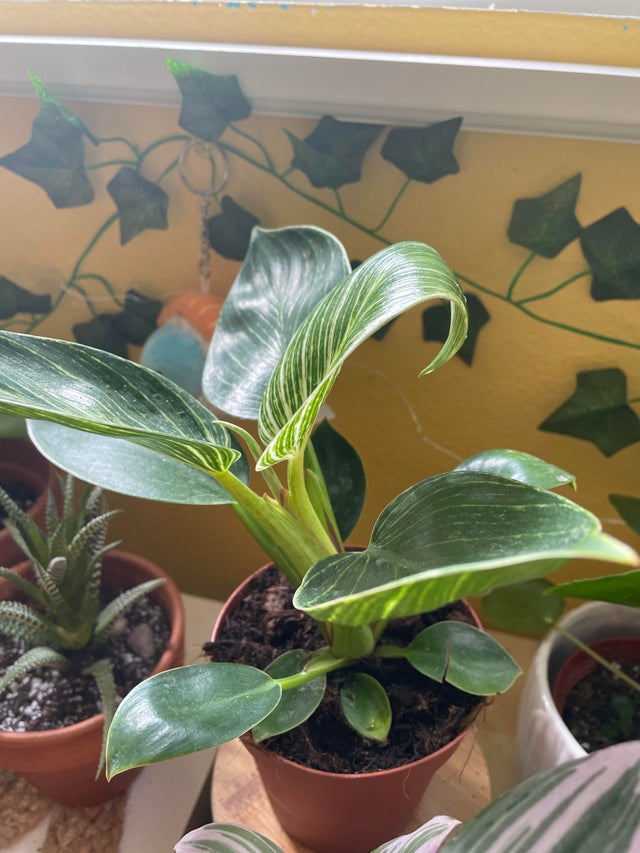
Image Source: Reddit
The Birkin leaves can curl due to an excessive cold or dry environment. Extreme cold can happen during the winter and summer when the air conditioner is run. Both conditions lead to drying. The solution here is to relocate it to a good condition safe from extreme temperature and more humidified.
Can a Philodendron Birkin Revert?
Since Birkin is a chimeric mutate of the Rojo Congo, it can revert or lose its variegation. Caring tips on how to stop Philodendron Birkin from reverting include;
- Remove all reverted leaves.
- Fix the light issue. Expose plants to moderate to bright light.
- Add a balanced ratio of nitrogen, potassium, and phosphorus. Avoid overfertilization or under-fertilization.
- Water more frequently, and don’t overdo it.
Philodendron Birkin Variegation: Philodendron Birkin White Leaves
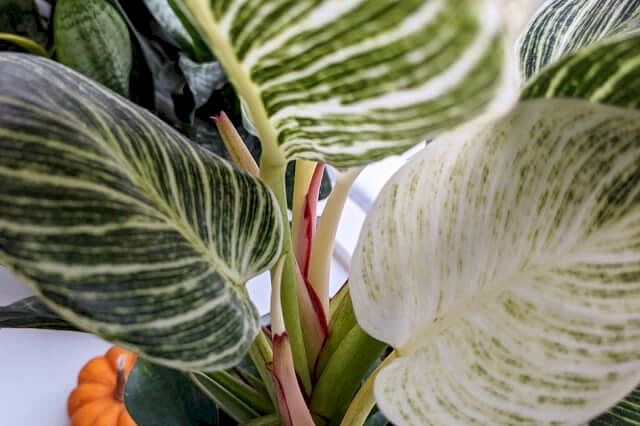
Image Source: Plant care for Beginners
Too much exposure to light or little light, overwatering, pest infection, or fungal infection can cause a Birkin leaf to turn white. This condition should be attended to avoid further damage to the plant immediately. However, it’s normal for your young plant leaves to be white as a sign of new growth. It’s an indication that the plant is healthy and thriving.
Philodendron Birkin Diseases Concerns
Root Rot
Root rot is a common disease of the Birkin plants, causing leaves to turn yellow, brown, or drop. The symptoms start on the lower leaves and gradually progress to the plants. The disease causes poor vigor in plants.
A control measure is to use a sterile potting mix with clean pots. Also, avoid overfertilizing and overwatering, especially in the plant’s crown.
Fungi
Fungi infection on a Philodendron Birkin plant looks like lesions. They are dark brown, irregular shaped, water-soaked, etc. disfiguration on the leaves. This disease is most common during summer months in the ground beds of Philodendron plants. The solution is sterilizing potting media on raised benches to remove much of the disease.
Bacteria
Bacterial leaf spot is a disease on Philodendron Birkin plants caused by bacteria (Erwinia spp.). A tiny water-soaked area develops on the leaf, which could expand into a blackened lesion. When the bacteria finally gets into the petioles, the leaf could collapse.
The solution is to separate the affected leave as soon as the condition is spotted to prevent the bacteria from spreading while handling the plant or splashing water.
Pests
Spider mites are one of the common pests that come to infect a Birkin plant. Another common one is thrips. These pests can lead to stunted growth, devouring the plant’s roots. When a pest infection is noticed on your Birkin plant, first isolate the plant and treat it with a pesticide, like an insecticide soap or neem oil. Ensure all instructions are followed.
How Much Does a Philodendron Birkin?
The cost of Philodendron Birkin is relatively low compared to other rare species of the Philodendron. It is inexpensive, and the breakdown of the prices is given below based on their sizes;
- Small plant (containing few leaves) costs $10-$30
- Medium plant (complete houseplant) costs $33-$100
- Large plant (established) cost over $100
Where to Buy Philodendron Birkin?
There are several places where you can buy our Philodendron Birkin plant. You can check online, at your local garden shop, or at a big box retailer (this depends on the time of the year). You can also check our selections at Guyabouthome for the best and most unique handmade pieces.
For more step-by-step ideas, diy tips and guides, kindly visit the website guyabouthome.com providing the best garden & home improvement tips.


